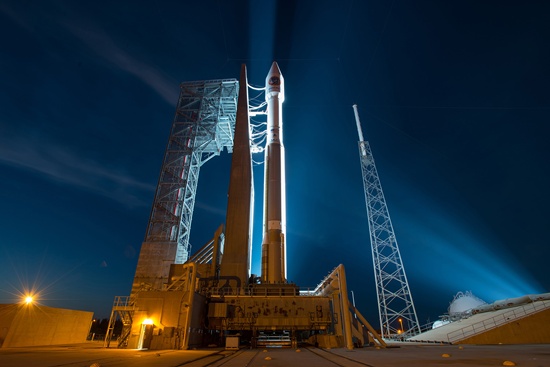
March 23, 2016
WASHINGTON (AFP) - An unmanned cargo ship blasted off Tuesday for the International Space Station on a resupply run that will also feature an unprecedented fire experiment after the craft leaves the orbiting outpost.
NASA partner Orbital ATK launched its unmanned Cygnus cargo ship from Cape Canaveral, Florida, atop a United Launch Alliance Atlas 5 rocket at 11:05 pm (0305 GMT Wednesday), the start of a 30-minute launch window.
Cygnus is expected to enter into orbit about 20 minutes after liftoff and will reach the ISS on Saturday, where it will dock with the help of the station's robotic arm in a procedure due to start at about 1040 GMT, according to NASA.
The launch will mark Orbital's fifth supply mission to the orbiting laboratory, as part of a $1.9 billion contract with NASA to deliver necessities to the astronauts living in space.
It will be the second since December, which marked the resumption of the company's missions after an Orbital Antares rocket packed with thousands of pounds of supplies exploded seconds after takeoff in October 2014.
Orbital is due to carry out two other ISS resupply missions this year for NASA, with the next one to take place in early summer from the US space agency's Wallops Flight Facility in Virginia with an Antares rocket.
Tuesday's launch is the second flight to the ISS of an enhanced Cygnus spacecraft, which carries 7,900 pounds (3.6 metric tons) of supplies to the station -- including food, water, clothes for the ISS crew of six astronauts, as well as material to support dozens of science and research probes.
Cygnus will stay at the ISS until May. Loaded with trash and once it is at a safe distance from the station, NASA engineers will then set off a blaze inside the capsule to see how large flames behave in space.
NASA has set off tiny controlled fires in space in the past, but never tested how large flames react inside an orbiting space capsule.
The Cygnus cargo also includes an instrument that, for the first time, will allow experts to evaluate, from space, the chemical composition of meteors entering Earth's atmosphere.
The pressurized vessel is also transporting a new 3D printer and another scientific highlight includes a so-called Gecko Gripper, a mechanism similar to the tiny hairs on the feet of geckos that makes it possible for them to stick to surfaces.
This technology could one day be used on the hands and feet of robots that would move along the exterior of spacecraft to carry out inspections and repairs.








